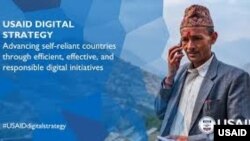The rapid development and adoption of digital technology along with the tremendous growth in mobile phone ownership and mobile broadband usage is transforming industries, governments, economies and societies the world over.
That is why the U.S. Agency for International Development, or USAID, rolled out in mid-April its first Digital Strategy. This strategy will utilize digital technologies to improve its work in development and humanitarian-assistance, and help countries on their journey toward self-reliance through the responsible use of digital technology.
Even though digital technology can be a great equalizer, there is a danger that those who stand to gain the most from the benefits provided by these new technologies could be left behind.
Four billion people, nearly half of the world’s population, do not have access to the internet. Vulnerable or marginalized groups may be shut out of the digital ecosystem due to inadequate infrastructure, and the high costs of service and equipment, or they may be overlooked because of their religion, political views, lack of economic power or gender.
The gender digital divide is of great concern as it continues to grow in the developing world. According to the Global System for Mobile Communications, or GSMA, an industry organization that represents the interests of mobile network operators worldwide, women, on average, are 8 percent less likely than men to own mobile phones and also 43 percent less likely to have access to the internet.
This means that half the world’s population, mostly women and girls, lack the ability to access information, health care, government and banking services, weather forecasts and new learning tools available on the internet or over mobile devices.
USAID is committed to not leaving the poor and marginalized behind. Its digital strategy, to be implemented during the course of five years, will strengthen open, inclusive and secure digital ecosystems in each country where USAID works, and use these powerful tools to help transform and improve lives, spur economic growth and strengthen communities. It will enable women and men to live freer, healthier and more prosperous lives while contributing to the goal of ending the need for foreign assistance.














